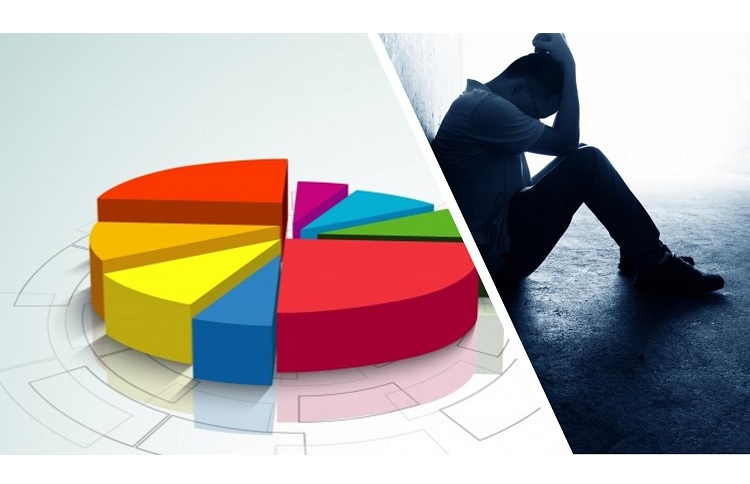
By Pooya Stone
In Iran, the actual statistics of people with mental health problems and other social problems that need treatment are not properly stated and the truth is always concealed, unrealistic statistics and various percentages are reported.
The question is, what is the actual number of people with mental and psychological problems in Iran?
Mental disorders range from mild to severe, from daily stress to anxiety, depression, bipolar disorder, mania, severe depression, addiction, schizophrenia, suicide, and insanity. The most common mental illness is depression among women and addiction among men in Iran.
Providing a favorable living and community environment is necessary to improve one’s mental state, otherwise, the community experiences psychological stresses such as aggression and lowered resilience, which can have many negative consequences.
Mental health is one of the four dimensions of health, which is in addition to physical, social and spiritual health. According to government law, the Ministry of Health is responsible for protecting people’s health, but this Ministry has stated that “it has no role in preventing violence, mental distress, and disorder and can only treat patients if the disease occurs.”
Mental illness is most prevalent in Iran, after cardiovascular disease and road traffic accidents, with one in four families suffering from mental illness. Anxiety and depression make up about two-thirds of mental illness cases.
According to a survey by the American Gallup Institute, which surveyed a number of citizens in 140 different countries, in 2018, Iran was one of the world’s saddest countries.
The latest statistics
Nematollah Fazeli, Associate Professor of Humanities and Cultural Studies, claimed on 30 October 2019, in the Zaviyeh program, “In Iran, 13 million people have mental disorders.” He claimed while in the past years and month there have been many different statistics about the mental disorders in Iran.
The Ministry of Health has reported that 23.6 percent of the population has one type of mental disorder, which is in line with the global average. Ministry of Health statistics also indicates that adolescence is currently the main age at which people with mental disorders develop. Children of the new generation are also more likely to have a mental disorder.
But some experts speak about bigger numbers, such as Nahid Khodakarami, a member of the Tehran City Council, that only in Tehran the estimated prevalence of mental disorders is 27%.
“30 percent of Iranian people have mental disorders,” the Sazandegan newspaper reported on 1 November 2019.
But Rasool Khazri, a member of the Iranian parliamentary commission on social affairs, said on 13 September 2019, that “more than 40% of the population is suffering from mental health problems.” Pointing to the impact of the wrong policies of Iran’s government, Khazri emphasized: “Addiction, unemployment, mental health problems and youth depression due to lack of jobs and housing and livelihood security are the result of poor economic planning.
Dr. Nouriman Ghahari, a psychologist, sees the cause of the widespread psychiatric disorders in Iran as “widespread and organized repression of the state.”
Also, Ahmad Ali Noor Bala, an adviser to the Minister of Health in the field of psychiatry, said that about 50% of people have severe mental disorders due to economic problems.
Treatment
Iran is facing a severe shortage of hospitals for neuropsychiatric patients who are also deprived of insurance coverage. For this reason, there is no improvement in the treatment of this number of psychiatric patients.
“When 30 percent of people in the community have a mental illness, 30 percent of hospitals should also be dedicated to treating these patients,” said Dr. Iraj Khosronia, head of Iranian Society of Internal Specialists, about the shortage of hospitals for mental diseases.


